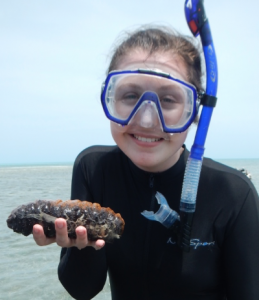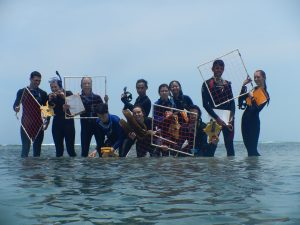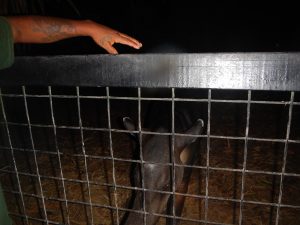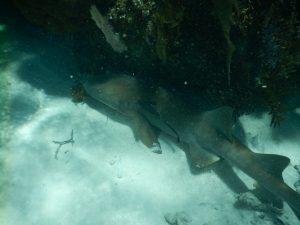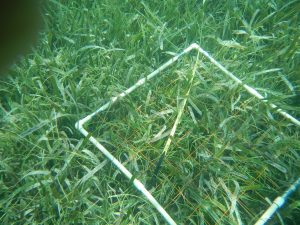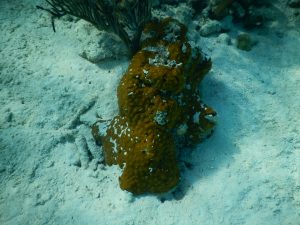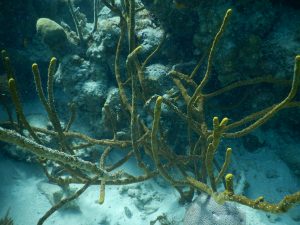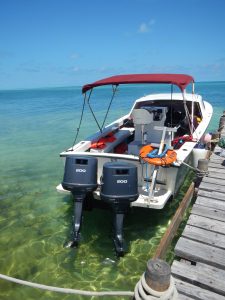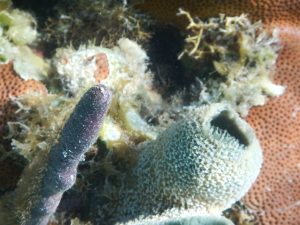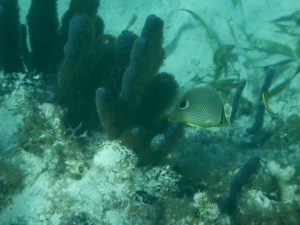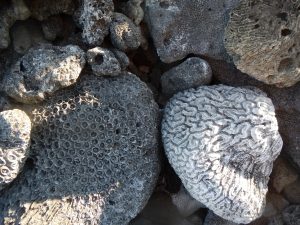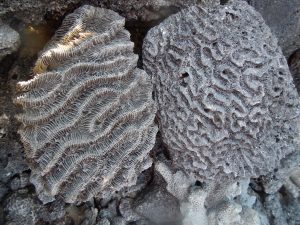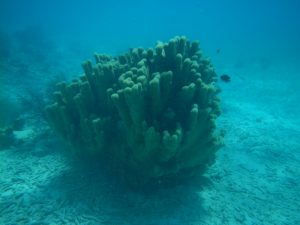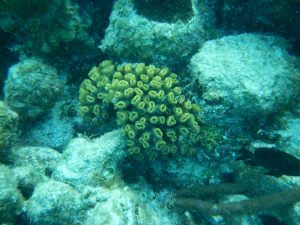Ellie, Isaac, Damien, and I woke up early today to watch the sunrise from the observation tower at Glovers. It was beautiful! The perfect way to end our time at the reef. We’re all very sad to leave the ocean 🙁
We left Glovers around 8 and visited a research station run by the Smithsonian on our way back to the mainland. They had the BEST toilets ever: out on the end of the dock, looking out over the reef crest. Wow! Our last stop before the mainland was Twin Caye, an island of mangroves. We got to snorkel around, and we saw a manatee and a seahorse!
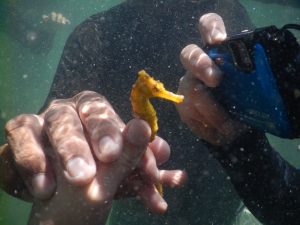
When we got back to Belize City, we headed out to the Belize Zoo, where we are staying the night. We took a hike on a trail, and I saw loads of epiphytes! I could identify some of them, and Adrienne even crossed a river bed to help me. More epiphyte details to come in the following days. Dad – we think we saw a chachalaca!
After dinner, we got to take a night tour of the zoo and see all the nocturnal animals out and about! We got to feed a tapir, see several different owls, and ogle over 4 species of cats. Junior the jaguar did somersaults for us, and I think it was one of the cutest things I’ve ever seen. The ocelot ran over to us and purred, and it reminded me of my kitty back at home. I even got to hold a boa constrictor.

This is our last night staying in the Belize Zoo. I will miss this place! Tomorrow we will head toward Las Cuevas! Mom – We have pretty good wifi here, so I am about to add photos to all my old blogs (If you click on the tag “Jordan” at the bottom of this post, you can see all of them)!

